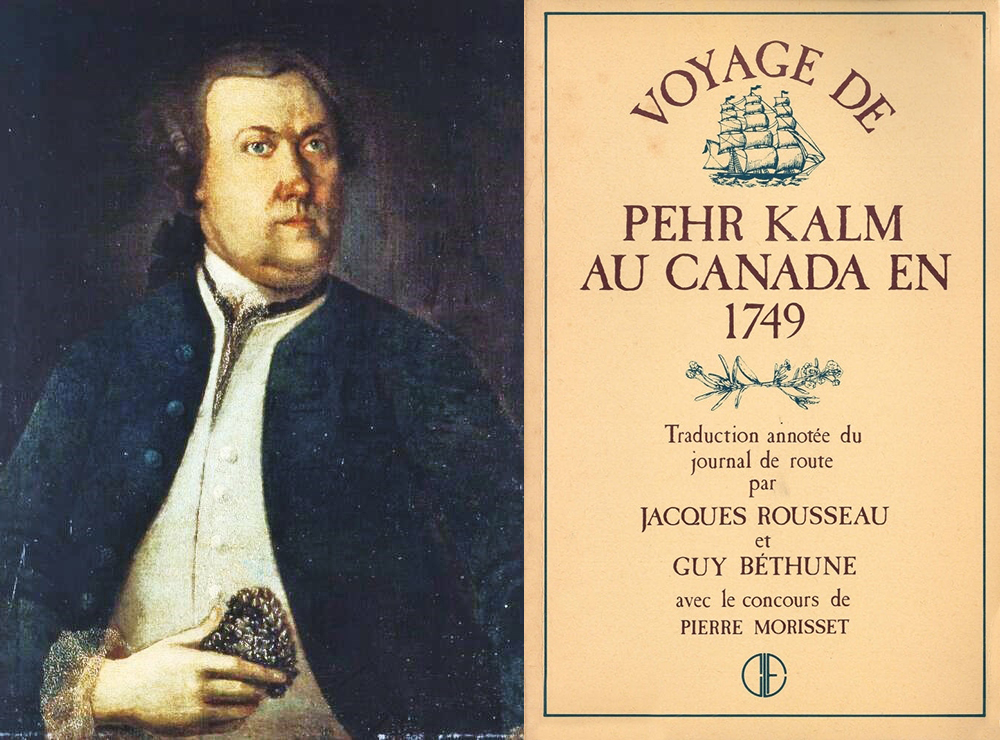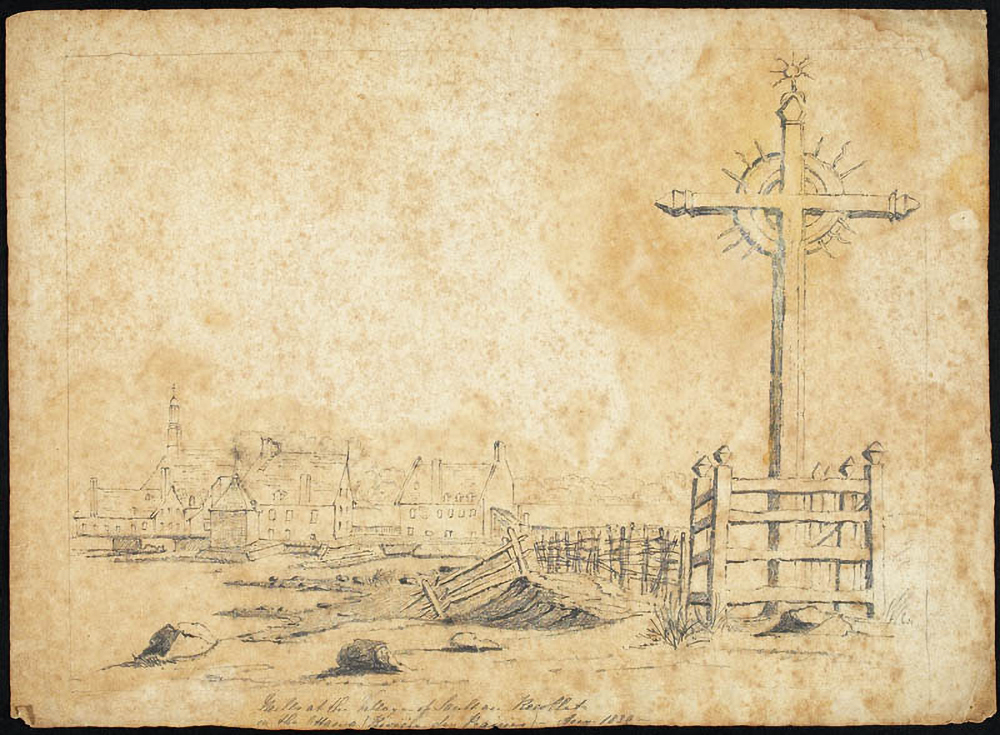Pehr Kalm: an unexpected visitor to the village of Sault-au-Récollet
On a sunny September day in 1749, Swedish naturalist Pehr Kalm leaves Montreal heading north. The land is wooded and hilly. The path is cut by deep furrows that make travel by horse-drawn carriage difficult.
Once near Sault-au-Récollet, the forest parts to reveal an open area of fields and meadows. Farmers have already harvested all the grain. In the distance, the bell from the decrepit old wooden church rings midday.

Left: reproduction of a painting: National Museum of Finland, Helsinki/right: cover of the book Voyage de Pehr Kalm au Canada en 1749. An annotated translation of the travel journal of Pehr Kalm) by Jacques Rousseau and Guy Béthune in conjunction with Pierre Morisset. Published by: Pierre Tisseyre, Montreal, 1977.
The traveller knocks at the presbytery door, but the priest seems to be away. He then comes upon Simon Sicard, the miller, who offers him hospitality. Mrs. Sicard adds another chair at the table for their travel-weary guest. She puts a loaf of freshly baked bread on the table, as well as forks and spoons, next to each plate. Everyone pulls their knife from their pants or skirt pocket and starts eating this “overabundant” meal. Bread made of wheat flour is the staple food of the countryside.
In the evening, the people of Sault-au-Récollet explain to their guest: “For every bushel of wheat we sow, we harvest fifteen, sometimes twenty.” Neighbours had brought over “Iroquois pumpkins”, a type of squash sold by Indigenous people in the Montreal market every Friday. The cooked slices are very sweet and rather tasty.
Humble folks tend to adopt the fashion and customs of Indigenous people, like pipes, shoes, belts, bark canoes, and a square of fabric wrapped around their leg in place of socks.
The next day, Mr. Sicard takes his Swedish guest on a tour of the mills. The traveller would go on to write in his journal: “The common folks in Canada are more civilized and ingenious than in any other place I have visited around the world.”


